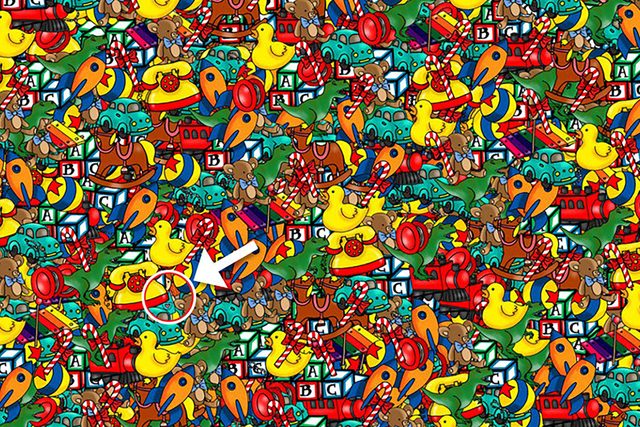
No Bad Apples
There were boxes of apples stacked upon boxes of apples, and milk crates and plastic bins and brown paper bags of apples, too. Calgary cider maker Brodie Thomas had lost track of how many containers had arrived. It was enough to cover the floor of a 222-square metre warehouse, leaving a corridor wide enough for only one human and a dog—Bramley, named for a variety of apple—to squeeze through.
Thomas sat in a chair, taking it all in, worrying his dream would turn to rot in front of his eyes. “I thought, ‘Oh my god, what have I done?’”
The dream he speaks of started more than a decade ago when Thomas was living in England and working in food policy. There, he fell in love with the very British tradition of drinking cider and came up with an idea. When he returned to Canada, he’d start a cidery, one that reflects his philosophy on food production: be local, waste conscious and socially responsible.
In 2015, Thomas launched Uncommon Cider in Calgary, the province’s first cidery. (The company uses apples from British Columbia and berries from Alberta.) Two years after bottling his first batch, he announced a local fruit drive to make a cider as homegrown as possible. Thomas and his crew of volunteers offered to come to anyone’s home in Calgary and pick unwanted fruit from their trees. They planned to press and ferment the fruits into a cider, with some proceeds going to charities.
Calgary is a city known for oil and gas companies, but anyone who lives there can attest that, come late summer, its sidewalks are splattered with fallen fruit. That’s true even in new neighbourhoods where developers plant crabapple trees in abundance for their pretty pink, red and white blossoms.
When residents called Uncommon Cider to donate fruit, Thomas drove his Volkswagen hatchback to their home, his ladder hanging out the back. In 2017, he collected nearly 1,500 pounds of donated fruit, which he estimates will produce about 1,100 litres of cider.
The next summer, Uncommon Cider’s fruit drive exploded in popularity. Within a few days, 400 people offered their trees for picking. Overwhelmed by the response, Thomas set up drop off spots around the city where people could leave their fruit. He borrowed vans from other local breweries to collect the donations and relied on volunteers to help.
And that is how he found himself staring at approximately 23,000 kilograms of fruit in his warehouse, hoping to process it into juice before anything spoiled. “That was the most heartbreaking time. All these people donated this fruit, and I just didn’t feel like I had enough hours in the day.” In the end, Uncommon Cider succeeded in making more than 10,000 litres of juice from both fruit drives.
It takes a year or longer to press fruits into juice and then ferment it into cider, says Thomas. Due to a high proportion of crabapples (which take longer to ferment) in the 2017 batch, it won’t be ready to sell until this Spring—and he plans to donate 10 per cent of proceeds from that year’s cider to Inn From the Cold, a charity supporting the homeless.
Meanwhile, the 2018 batch was ready sooner, and went on sale when Uncommon Cider’s first taproom opened in August 2019. A few months after that, growlers of the cider became available across Alberta. From that lot, Thomas hopes to donate $10,000 to the Calgary Food Bank over the next year.
“That will have a huge impact,” says Shawna Ogston, spokesperson for the Calgary Food Bank. She adds that, through partnerships with other organizations, the food bank can leverage every dollar donated, into five dollars worth of food. “So $10,000 goes a long, long way.”
Eventually, Thomas hopes to set up an Uncommon Cider tool library where people can borrow ladders and buckets for picking their own fruit. He envisions a province-wide fruit drive where people from different neighbourhoods across Alberta contribute fruit for a community cider.
His long-term goal is nothing less than changing the way people think about food waste: “We can be creative and make a lot of things with fruit that’s usually thrown out.”
Next, read the inspiring story of how an Alberta man with autism is inspiring families to rethink what their children can achieve.

You own duplicates
If you aren’t sure what you own, it’s a tell-tale sign you need to get better organized. Perhaps you bought the same sweater as one you already had in your closet, or the same tool you already own. Go through your things and get rid of any duplicates.
You miss appointments
Have you missed any appointments or meetings? If you have no good reason for missing something on your schedule, it may be time to start organizing your calendar. Whether you carry a planner with you, use an online calendar or even write it down on an at-home message board, it makes it easier to keep track of where you should be and when.
You shop—a lot
Perhaps you seem to end up at the grocery store or hardware store more than you’d like. Maybe you’re missing an ingredient or can’t find what you’re looking for, so you just buy a new one. Now is the time to go through your things, do some decluttering and organize your belongings so you can spend less time buying things you don’t need and more time getting projects completed. (Canada’s top organizing experts share helpful hints on how to declutter every room of your home.)
You don’t have a routine
Sometimes we get to a point where we feel there’s too much to do and not enough time to get it all done. If you are feeling overwhelmed, you may just need to organize your time instead of trying to accomplish every task without a plan. Try creating a daily routine so you know what you need to do each and every day.
You lose things
If you’re consistently losing things, such as your wallet or your keys, it may be time to get organized. If you tend to misplace things, try creating designated spots for these items, such as putting a tray by the door to place your keys and wallet every time you get home.
Everyday tasks are problematic
When everyday tasks, such as getting dressed, become problematic, it could be a sign that you need to be better organized. If it takes you a long time to just pick out your outfit, it may be a sign that you have too many clothes. Take some time to get rid of items you no longer need or want—sometimes less is more. (Check out these ways to squeeze more storage out of small spaces.)
You don’t delegate
If you feel like you’re doing it all around the house, you may need to start delegating tasks. Have the kids help out with age-appropriate chores, such as vacuuming, dusting and walking the dog. Have your partner get dinner going while you help the kids with homework or tidy up the living room.
You never declutter
Sometimes clutter can become so overwhelming we don’t know how or where to start. Take some time each week or each month and set a time limit—say 30 minutes to an hour—and use that time to declutter a room. Clean out your bedroom closet or organize your basement workspace and when time is up, you’re done for the day!
You procrastinate
Instead of putting off things you need to do (which can create even more stress), create a list of things you need to accomplish. Whether you start with the big items or the small items, being able to cross them off your list will give you a sense of accomplishment.
You feel shame
If the idea of having people over to your home makes you feel ashamed because your space is messy and cluttered, it is a sign you need to get better organized.
Next, be sure to implement these cleaning tips that actually work!

There are very good reasons why!
Unless you have a seat in first or business class, boarding and deplaning an aircraft can be stressful experiences. Because you’re so busy worrying about finding room in the overhead compartment and trying not to knock other passengers on the head with your personal item, you may not notice things like the plane’s interior colour scheme. But if you pay attention the next time you board a plane, you’ll likely notice that its seats are blue. Of course, there are exceptions to this—like Virgin Atlantic’s red seats and the green seats on Aer Lingus—but in general, airline seats tend to be blue. So why is that? We spoke to some experts and looked into the science to find out. (Did you know there’s a browsing mode that will get you the cheapest flights?)
Blue is easy to keep clean
There isn’t usually a lot of time to clean a plane between flights, so it’s in the company’s best interest to pick colours and fabrics that can handle a lot of traffic. According to Rishi Kapoor, founder and CEO of Nanak Flights, many airplane seats are blue because stains or smudges can blend in better than with most other colours, meaning airlines don’t have to replace their seats as often.
Blue is a calming colour
Even if passengers don’t have an outright fear of flying, the whole process can make even the most seasoned travellers a little anxious. To help counteract that, many airlines opt for blue seats because the colour is thought to be calming. That is also the reason Pantone named “classic blue” the 2020 Colour of the Year, which it describes as “instilling calm, confidence, and connection.”
“Even though travelling by plane is statistically the safest way to travel, many passengers are still prone to stress while traveling on an airplane,” Kapoor tells Reader’s Digest. “It might seem like an insignificant detail, but it’s one that helps make flying the best way to travel.”
A statement from Boeing on using the psychology of colour when designing aircraft confirms this, noting that blue is “nearly unanimously” associated with peace. In addition, Boeing selects the patterns for cabin walls based on those found in nature because “these designs help create the relaxing environment that people find in the outdoors,” Virginia Tripp, a Teague designer who studies colour psychology said in the statement. (Find out why it pays to read the fine print when you travel.)
It makes you feel cooler
Planes tend to have two temperatures: bitterly cold (thanks to blasting air conditioning), or sweltering hot and stuffy (thanks to a large number of people being crammed into a flying tube with recirculated air). Airlines do try their best to help keep you cool—hence the sometimes-arctic air conditioning—and yes, blue seats play a role in that as well. “Colours also can influence a person’s perception of humidity, temperature, and aroma,” Tripp explained in a statement from Boeing. Not only does the colour blue make people feel cooler, but it also can send a message of clean or fresh fragrance.
Blue as part of branding
In some cases, the choice of blue for an airline’s seats is simply part of the company’s brand, Sara Rathner, travel expert at NerdWallet tells Reader’s Digest. “U.S. carriers commonly use blue and red in their logos as a nod to America, and blue seats are an extension of that,” she explains. Along the same lines, John Frigo, a digital marketing expert, says that the colour blue instills trust—a very important aspect of branding—which is why many dentists, banks, and financial services companies have blue in their logo or colour scheme.
Color Psychology, a website that explains the meanings behind different colours, confirms this, noting that blue helps instill feelings of trust, dependability, and confidence. In addition, a 2011 study in the Journal of the Academy of Marketing Science found that the colour blue is also associated with competence—something incredibly important for airlines, given that we put our lives in their hands every time we fly.
So the next time you’re crammed into the narrow aisle of an airplane trying to squeeze by your fellow passengers, take a look at the plane’s seats—chances are they’ll be blue, and ideally, they’ll do their job and make you feel calm.
Next, read on to find out why airplane windows have little holes.
Here’s a debate you may have missed out on: There are two proteins in milk, and one is supposedly the source of trouble for people with lactose intolerance. But can getting dairy products that don’t have the troublesome protein make a difference in people’s health? Depends on who you talk to, but the science suggests the issue is far from settled.
If dairy products make you feel icky, you could be tempted to write off milk—or go for lactose-free products—forever. But lactose might not be behind your problems, a little-known protein called A1 may be the culprit.
Some people have trouble digesting lactose, a sugar in milk. When the body can’t break lactose down, people with lactose intolerance experience bloating, gas, diarrhea, and other gastrointestinal issues. While the sugar has been fingered for the blame, some researchers claim it’s really a protein known as A1.
Here’s where things get a little complicated: Beta-casein is one of the main proteins in milk, but it comes in two varieties: A1 and A2. While most cows’ milk contains both, some types have just A2. Genetic tests can figure out whether a cow will naturally produce the A1 protein.
The A1 and A2 proteins are identical in all but one of their 209 amino acids, says registered dietitian Bonnie Johnson, RDN, vice president of scientific affairs for The a2 Milk Company, which sells milk from cows that only produce the A2 protein. Your body breaks down A1—but not A2—into a protein fragment called beta-casomorphin-7 (BCM-7), says Johnson, and that could cause inflammation. The GI symptoms would look similar to lactose intolerance and might cause a skin rash. A1 also gets blamed for a host of other chronic troubles, such as heart disease, type1 diabetes, and even autism.
However, studies have already disputed claims that the A1 protein can raise the risk of these conditions, says Dallas-based nutritionist Angela Lemond, RDN, spokesperson for the Academy of Nutrition and Dietetics. And the only human studies linking A1 to digestive problems have been very small, and the results aren’t conclusive, she says.
A small study published in 2016 in the Nutrition Journal, which was funded by The a2 Milk Company, did find that people who drank milk with both the A1 and A2 proteins for two weeks had more digestive discomfort and more inflammation than those who drank milk with only A2. And while both types of milk had the same amount of lactose, the A2 milk seemed to reduce symptoms in people with lactose intolerance.
The A1 protein might make it harder for lactose-intolerant people to digest the milk sugar, says Johnson. The inflammation from the digested A1 protein known as BCM-7 starts high up in the gut, and that inflammation can make digesting lactose even tougher. “If you can stop inflammation up top, you can make the gut environment more hospitable for breaking down lactose later on,” says Johnson.
That said, the jury is still out on the value of A2 milk, warns Lemond. Another thing she’d like people to keep in mind: Lactose intolerance doesn’t mean you have to give up on cow’s milk. “That is a common misconception,” she says. “Most people can digest a small amount, and you can actually slowly work up to more if you start slow.”
Next, check out the latest research on the growing debate: is milk good for you?

Attention, puzzle pros! Online motherhood community Channel Mums has designed a brain teaser that is sure to get you feeling festive for the holiday season—and seriously test your attention to detail, too.
Here’s the challenge: Hidden somewhere in this crazy conglomeration of dinosaurs, rocket ships, teddy bears, and yo-yos is a single doll. But only the most eagle-eyed observers can track it down.
“At first glance, it looks like every mum’s nightmare—the scene of living room chaos following the opening of the Christmas presents,” Siobhan Freegard, spokeswoman for Channel Mum, told The Sun. “It’s very tricky, but it shouldn’t take longer than your average wrapping paper clean-up.”
That said, don’t be too hard on yourself if you can’t spot the pesky doll. It may speed up your search to know that you can only see half of her body; the other half is covered by a few extra toys.
If you can find it, challenge yourself to these nearly-impossible Christmas brain teasers.
The solution
Is your mind officially boggled? Thankfully, The Sun has found and circled the doll for us. It’s on the bottom left-hand corner of the image, camouflaged by a telephone and teddy bear. If puzzles aren’t for you, here are some funny holiday jokes to bring more cheer.


The “Kim Kardashian of Cats” started life out in a shelter, just waiting to be loved. Today that dream has surely come true, as Nala has over 4-million followers on Instagram, a feat which earned her the title, “Guinness World Records Most Popular Cat on Instagram.” Since finding her forever family with moms Varisiri Pookie Methachittiphan and Shannon Ellis, she’s built an empire to include her own cat food line. Nala was recently named the “most popular cat on IG” by Business Insider and is currently nominated for a People’s Choice Award.
Just visiting
In 2010, Methachittiphan was a student living in Los Angeles. From time to time, she would visit shelters in her neighbourhood without any plans to adopt. She just liked being around the animals. In fact, she recently told Reader’s Digest that the day she met Nala, she’d been visiting a high kill shelter in L.A. purely to spend time with some of the cats. Saving pets from shelters can also save your life—just check out these true stories of shelter dogs that saved their owners’ lives.
Love at first sight
“I had no intention to adopt a cat that day,” Methachittiphan says. But when she saw Nala in her metal cage, “We made eye contact and I couldn’t resist her big blue eyes.”
At that point, she was done for. “Nala was so small. I asked the shelter if I could hold her. Once I had Nala in my arms, Nala looked up at me and licked my face.” And that was when she knew she had to take this kitty home. “It was meant to be.”
Doing it for the ‘gram
Still, Methachittiphan never imagined Nala would become an Insta-star. “I started Nala’s Instagram account in 2012 as a way to share photos with my close friends and family in Thailand,” she explained. The possibility of Nala gaining attention beyond that small group of people hadn’t occurred to her… Until it happened.
A star is born
“I had no idea that people would enjoy photos of Nala so much until her photo landed on Instagram’s popular page,” Methachittiphan says. “Each time Nala’s photo was featured on Instagram’s popular page, her account would gain 1,000 new followers. I was overwhelmed with the response and began to realize she had something special here!” (Find out the most affectionate cat breeds.)
The rise of an influencer
From there, Nala’s popularity snowballed. “When Nala’s fans started to reach out and inquire about merchandise, we began to realize just how popular Nala was becoming.” But that was just the beginning. Next, large nationwide brands messaged Methachittiphan about hiring Nala to do sponsored ads. “This took us by surprise because Nala’s account grew organically.” They couldn’t believe that a big brand wanted to pay them to take photos with their products next to Nala. “That was the beginning of Nala’s influencer journey.”
Growing the family
Since adopting Nala, the family has only grown. “We have a house full of adopted and influential furry babies!” Methachittiphan says. Nala’s brothers and sisters include five other kitties and one pup, all of whom have their own social media followings to brag about.
Stella the cow-kitty
Stella was the first kitty Ellis adopted, and she was originally meant for her nieces. “Stella was owner surrendered to a rescue when she was two years old and now she’s 13 years young!” Methachittiphan says. Together with her brother Steve, she has over 100,000 Instagram followers. And it’s no wonder with that sweet face!
Steve the handsome tuxedo boy
Ellis later adopted Steve as a companion for Stella. “Steve was found behind a dumpster and dropped off at an animal hospital when he was four months old,” Methachittiphan said. “The animal hospital called to see if we could foster him, which we did and later adopted him. Today, Steve is nine years young and still handsome!”
Spencer the good boy
Spencer was adopted from the Hawaiian Humane Society when Ellis was there for visit. “She took Spencer for a walk and he stole her heart,” Methachittiphan says. “Today Spencer is our only pup and he loves his kitty siblings very much.” He also likes to dress up as a taco and show off for his 80,000 Insta fans. (Find out which breeds make the best dogs for apartments.)
Coffee the survivor
“Coffee is our five-year-old cancer survivor that has been an inspiration to us all!” Methachittiphan says. “Coffee’s first owner couldn’t take care of him and asked my sister, Ping, to adopt him. It was hard to resist his bright blue eyes, round face and gentle personality.” Like Nala, Coffee has an engaged following on Instagram, with 2-million fans and counting.
Little Baby Loon
“We found Luna listed on Craigslist and we knew that she needed to be part of our family,” Methachittiphan recalls. Also affectionately nicknamed “Baby Loon,” Luna’s original owner lived in New York. But because of Luna’s mild orthopaedic issues, they felt it was best for her to be re-homed with a family who could meet all her needs. “Today Luna is three years old and a very hungry kitty.”
Apollo the foster fail
“Apollois our newest addition and the baby of our family,” Methachittiphan explained. “Apollo was rescued from a high kill shelter last November and we fostered him back to health.” Once he was ready to be adopted, the family realized they weren’t ready to say goodbye. “Our connection and bond was too strong to see him leave our family.” (Check out this adorable gallery of the cutest cat breeds as kittens!)
Love, Nala
In addition to managing her Insta fame and keeping up with her siblings, Nala is also quite the entrepreneur. After years of working with, and being asked to test, various cat food brands, she decided to start one of her own. “It seemed like a natural next step to take our combined experience and passion to develop a company called Love, Nala with pet wellness and giving at its core,” Nala’s moms said. “Love, Nala is more than just a cat food line. Love, Nala is our chance to share the love we have been blessed with to help create a better life for other animals, so they can thrive and bring joy to the world like Nala has.”
For a cause
But Nala also works tirelessly to promote several causes near and dear to her feline heart. “Pet adoption and rescue are very important to our family,” Nala’s moms said. That’s why they started the #ShowtheBow campaign to encourage people to adopt and not shop for pets. “People can upload a photo of their pet wearing a real or GIF bowtie and use the #hashtag #ShowtheBow to show your support and raise awareness about the importance of pet adoption.” (These cat facts are purr-fectly fascinating)
Nala is also passionate about decreasing overpopulation, which is why she promotes spaying and neutering. “Considering that more than 2,000 healthy animals are euthanized every day across the United States alone, the goal is to end euthanasia due to lack of resources and overcrowded shelters.”
The family also supports The Paw Project. “Kitties need their claws to live healthy, happy lives!”
Next, read on for the incredible stories of heroic cats that served in the military.
Trying to figure out when to give your Jewish friend a Hanukkah gift can be a bit of a challenge. In 2018, the holiday began on the evening of December 2nd, while in 2019, it begins on the 22nd of December, according to the Gregorian calendar which follows the sun. Just like Christmas, the beginning of Hanukkah always falls on the 25th of the month, however, it is not in the month of December that it falls on. Hanukkah begins on the 25th of the ninth month of the Jewish calendar, Kislev, and this calendar follows the moon. While the dates of Jewish holidays may seem random, the Jewish calendar is actually a carefully calibrated system that ensures that holy days and festivals arrive on the proper day and season.
The Jewish calendar is based on a lunar calendar
One reason for the changing dates, notes Rabbi Norman Patz of Temple Sholom of West Essex in Cedar Grove, New Jersey and visiting Rabbi of Temple Beth Shalom in San Juan, Puerto Rico, is that the Jewish calendar is based on a lunar calendar that is adjusted to a solar calendar. While the secular calendar revolves around the sun and is 365 days, the Jewish calendar is based on the moon which waxes and wanes and is approximately 11 days shorter than the solar calendar. Rabbi Patz notes that the Jewish calendar adds a leap month (Adar I) every two or three years, for a total of seven times every 19 years.
Reconciling the calendar keeps order
The Jewish calendar begins with the month of Nissan (March/April) followed by Iyar, Sivan, Tammuz, Av, Elul, Tishri, Cheshvan, Kislev, Tevet, Shevar, Adar I (added), and Adar. By reconciling the calendar, the natural order of festivals stays in their seasons. “Sukkot is a festival that celebrates the harvest and comes in the fall. If it were 11 days shorter, it would end up in the spring,” notes Rabbi Patz. He also notes that the Muslim calendar is also based on the moon, but they don’t reconcile it, which is why the holy month of Ramadan also varies year to year.
It is the year 5780
While we on the solar calendar are wrapping up 2019, it is 5780 on the Jewish calendar. Jews do not use AD or BC, but note Common Era (CE) and Before Common Era (BCE).
Now that’s cleared up, you’ll want to be sure to check out more fascinating facts about Hanukkah.

From Japan to the Ice Capades
My name is Tokiko and I turned 79 years old last Halloween. My life story starts in the year 1940 in Japan, near the start of the Second World War. My father, who was an educator, taught his family to “make a positive experience at this unbelievably difficult time.”
Besides teaching school, my father managed to farm and grow vegetables and fruits. He also raised chickens and goats.
When I was eight years old, my father took me to the ice skating arena in Osaka, Japan, along with his students, in order to teach us all to skate. By the time I was 10, I had become a national junior athletic champion. I continued skating competitively until finishing my schooling at age 21. In school, I studied psychology, philosophy, Japanese literature and life coaching skills. I have also studied Zazen meditation and yoga.
As I was finishing my schooling, I was offered a three-year contract to skate with the American ice show, the Ice Capades, from 1962 to 1965. With my parents’ understanding and permission, I joined the show, which took me to 26 cities in the United States, two cities in Canada (Toronto and Montreal), as well as travelling to Australia. It was a great experience in learning about different cultures and people. It became a bit easier after I started to understand English better.
When the show performed in Toronto at Maple Leaf Gardens, I promised myself I’d return one day, as I loved the city.
Later, I had a chance to meet my future husband in Toronto and we carried on a long distance relationship for two years. We eventually married in Japan in 1965, then moved to Ontario to settle down and raise our family. We lived a happy and meaningful life together for 42 years.
Over the years, my passion has been to help people stay active and keep their mind and bodies connected. I taught figure skating for 31 years and also coached yoga.
These days, I enjoy coaching yoga at the seniors’ centre and am involved with “live well classes,” both of which are great as preventive medicine. I hope to show people of all ages that you are never too old to be involved in activities that you enjoy!
This random act of small town kindness will warm your heart!

Everything you need to know about meteorite impacts
Reader’s Digest Canada: If a meteorite were hurtling toward us, would we know ahead of time?
Robert Lamontagne: Yes. Even though the objects travel very fast, about 14,400 kilometres per hour, Spacewatch telescopes can detect the largest among them. Extraterrestrial materials don’t move in a straight line across infinity, but rather follow elliptical or parabolic trajectories. By studying their orbits, we can estimate the risk they represent. We’ll also know exactly when they’ll hit Earth.
Is there a greater risk of a strike during the Perseid meteor shower?
No, the Perseids recur every year without being dangerous. The reality is that the vast majority of extraterrestrial materials that could impact Earth are monitored. If a large meteorite—which is called a “near-Earth object” when its orbit crosses ours—were at risk of colliding with our planet’s surface, we would know several years in advance and have time to prepare.
Okay, so if we did get hit, what would happen then?
If a one-kilometre meteorite were to hit Montreal, the city would be completely wiped off the map. The size of the resulting crater would be 10 to 20 times the diameter of the meteorite—so that’s a 10- to 20-kilometre hole at the impact site. But that’s not all. The shock of the collision would cause a tremendous earthquake of a Richter-magnitude greater than 10 that would end up affecting all of northeastern North America. If the meteorite were to hit water instead, it would create a large-scale tsunami.
After an impact, the airborne debris would block the sun’s light on most of Earth for months, if not years, and would also lower the planet’s temperature. In short, it would be a human and environmental disaster.
I guess we’re lucky that Earth doesn’t get hit very often.
Well, the fact is, we’re struck by approximately 10 to 100 tonnes of extraterrestrial materials every day. The shooting stars you see at night are small particles from space that break up as they enter the atmosphere, which causes them to generate a trail of light. Most of the objects are small, about the size of your thumb, but there are also larger ones. Sky-survey programs have identified close to 20,000 Earth-crossing asteroids in the past 30 years. In early 2019, these ongoing monitoring programs, which are a legacy of Ronald Reagan’s “Star Wars” defence plan, had found around 900 asteroids measuring over one kilometre in diameter.
In the 1998 film Armageddon, astronauts destroy a meteorite before it collides with Earth. Is this possible?
That’s totally unrealistic. There’s no way the bomb the astronauts plant could split an asteroid as big as Texas. It would be the equivalent of flicking a bus. But there’s always a bit of real science in films like this, and we could try to divert an asteroid that was making a beeline for Earth. There are a few possible methods. One involves hurling a white powder or paint on one side of the object’s surface to cool it down. Just a slight change in temperature would create a variance in trajectory that could be enough if we act early.
Our moon is covered in scars caused by meteorites. Could it be hit again?
It’s not any more likely to be struck than Earth. But because there’s no atmosphere around the moon, the impacts are more violent and remain visible. That said, most of the craters on the moon’s surface were formed about four billion years ago, when there was more debris floating around our young solar system.
Have you seen a meteorite up close?
Yes, I’ve had the opportunity to examine some, thanks to a friend who collects them. Generally speaking, they look a lot like any rock you find on the ground. But when you think about it, they’re actually bits of the universe that date back to when our solar system was formed and have been travelling all that time. For an astronomer, that’s very moving.
Next, find out what’s inside a black hole.

12 Days of Christmas
Can you imagine the Christmas season without the “ten lords a’ leaping, nine ladies dancing, and eight maids a’ milking”? All singing aside, there actually is a historical basis for the traditional Christmas carol we all know and love. So how did Christians begin celebrating Christmas for 12 days in the first place?
The nearly two-week time period starts and ends with two pretty significant holidays: Christmas on December 25 and the Epiphany on January 6. Christians believe that the 12 days of Christmas mark the amount of time it took after the birth of Jesus for the magi, or wise men, to travel to Bethlehem for the Epiphany when they recognized him as the son of God.
But it wasn’t until three centuries after the birth of Jesus that early church leaders in Rome decided to celebrate his birth on December 25, according to History.com. (The first official mention comes from a Roman calendar in AD 336) Before that, the most important holidays in Christianity were the Epiphany and Easter, which marked Jesus’s resurrection.
The reason they picked December 25? Likely because it coincided with the Roman pagan celebration of the winter solstice and early church leaders were looking for converts. Then, continuing the festivities for 12 days was probably an adaptation of other pre-Christian celebrations that helped the ancient Europeans get through the long winter nights.
“Ancient Christians found a happy coincidence between these festivals that sought the sun’s return and the birth of the ‘Light of the world,'” according to U.S. Catholic. “Pagan festivals became Christian festivals, with many traditions remaining intact. Yule logs and lighted trees, holding off the seemingly endless night, are examples of such adaptations.”
Today, how the 12 days are celebrated by Christians around the world varies. For example, in some churches, the Epiphany (which means “revelation” in Greek) is celebrated as the day the three wise men visited Jesus. In other churches, the Epiphany marks Jesus’s baptism. (Here’s why we hang stockings for Christmas.)
The timing of the 12 days also varies. Eastern Orthodox Churches use a different religious calendar (the Julian calendar as opposed to the Gregorian calendar used by Western churches), so their 12 days of Christmas start on January 7 and runs through the Epiphany on January 19. And while Catholics celebrate the Epiphany as a single day, some Protestant churches celebrate it until Ash Wednesday, leading into the season of Lent and Easter.
Gift-giving customs also differ in some cultures. In Latin America, Christians hand out presents on January 6, which they celebrate as Three Kings Day, instead of December 25. And other cultures give gifts all 12 days.
The 12 days also honour a different feast or saint, before culminating in Twelfth Night, according to U.S. Catholic. They are:
Day 2 (December 26): St. Stephen’s Day, named for the first Christian martyr who was known for his service to the poor and was stoned to death in AD 36.
Day 3 (December 27): St. John the Apostle, a disciple of Jesus who wrote the Fourth Gospel.
Day 4 (December 28): Feast of the Holy Innocents, which remembers the baby boys that were killed when King Herod was looking for Jesus.
Day 5 (December 29): St. Thomas Becket, the former Archbishop of Canterbury who was killed in the twelfth century for challenging King Henry II’s authority over the church.
Day 7 (December 31): New Year’s Eve. One of the earliest popes, Sylvester I, is honored this day. Legend has it he converted the first Roman emperor Constantine to Christianity.
Day 8 (January 1): The feast day celebrates Mary, the mother of Jesus.
Day 9 (January 2): St. Gregory and St. Basil, two important church leaders during the fourth century, are honoured on this day.
Day 12 (January 5): The Eve of the Epiphany.
For centuries, Europeans have held large parties to celebrate Twelfth Night, also known as Epiphany Eve. The day has long been a day of feasting in England, while the French and Spanish make a special “king’s cake” to mark the three wise men’s visit to Jesus.
In an interesting twist, some Catholic scholars believe that the “12 Days of Christmas” carol, which first appeared in a children’s book in England in 1780, may have served as a teaching tool for persecuted Catholics in England during the 18th and 19th centuries.
Next, learn the fascinating history behind your favourite Christmas traditions.

